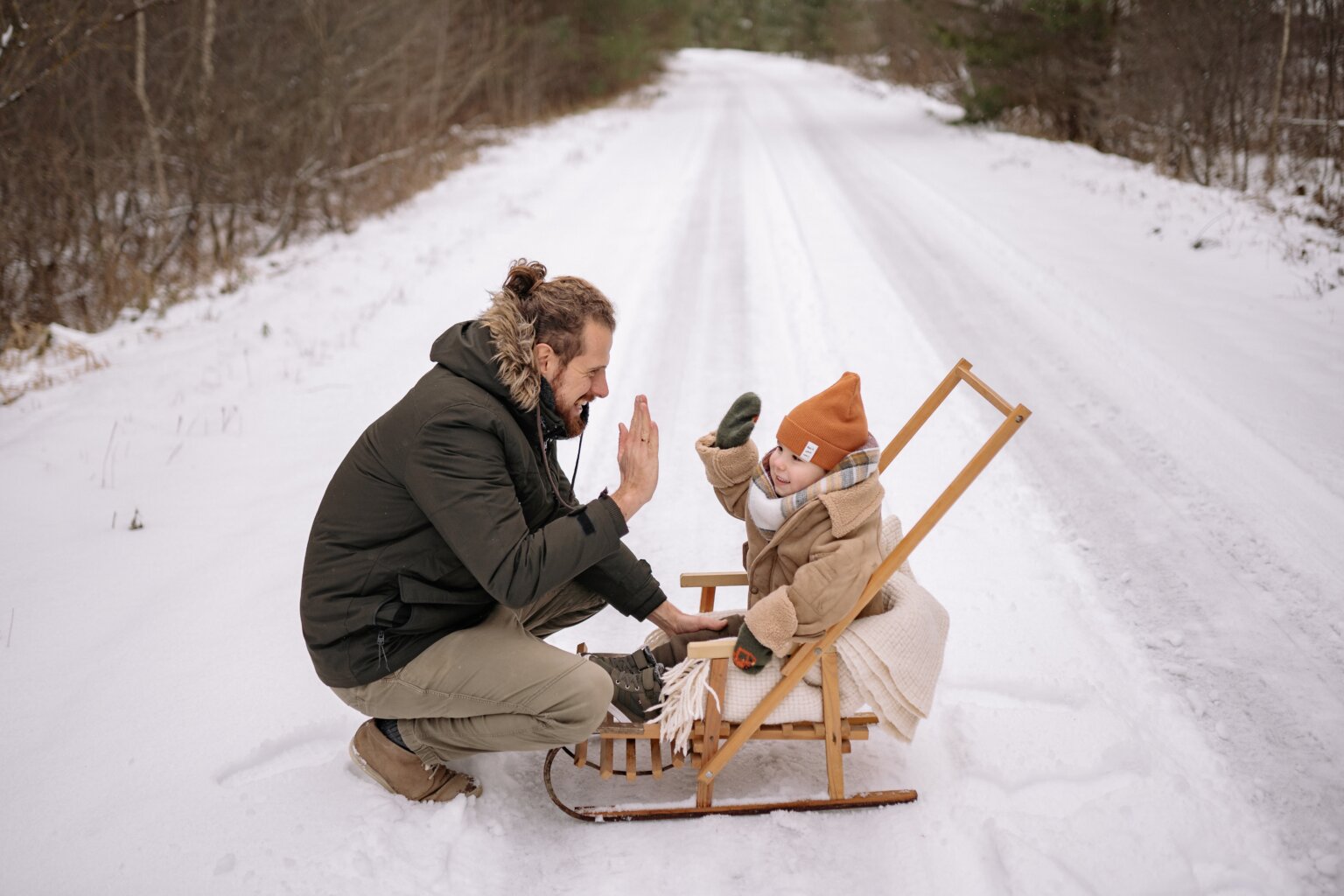
Talking to Kids about Body Boundaries During the Holidays
If there are any silver linings to the pandemic, one might be that we have increased our use of consent-based social behavior. Before, if we accepted a social invitation, we might have asked questions like, “What can I bring?” or “Does anyone have food allergies?”
Now we ask questions like:
“Would you be more comfortable inside or outside?”
“Masks or no masks?”
“Are you comfortable with hugs, fist bumps, or simply a wave?”
We are actively seeking what feels safe and comfortable to others and we are learning more about each other along the way.
This holiday season we have the chance to expand on what we know and talk to our kids more deeply about consent and boundaries. So where do we start?
Ask Questions
Start at home by asking the kids in your life what they are comfortable with. For example, ask “What do you like better, hugs or high fives?” Be curious and non-judgmental with their answers. Don’t question why they would or wouldn’t want a hug or cuddle from Grandma, just listen, accept, and keep talking.
Ask if their preferences change from person to person. Do they always like hugs? Or do they only want hugs from certain people and would prefer a high five or just a smile from others? Again, listen, and you may be surprised and delighted by the conversation.
Ask if their preferences change depending on their mood. This helps kids develop more awareness of their emotional landscape.
Practice and Teach
Show kids how they can communicate their preferences when a friend or family member approaches them. Then, practice with them.
Coach them to be specific, such as, “I don’t like that, I like this.”, “Can we _________ instead?”, “Can I have a fist bump?”, “Will you cuddle with me?”, “May I have a hug?”, “Yes!”, “No!”, or “No, thank you.” Role-play likely scenarios if you want.
Teach kids they can show kindness, love, and affection without physical contact. Provide them many examples, such as sharing a special story, reading a book with someone, sharing toys, drawing a picture, or making a card for someone. Kids need to know that love and affection comes in many forms.
Teach kids to never set aside their own discomfort to meet someone else’s needs when giving and receiving physical touch. Remind kids they have bodily autonomy—no one has the right to touch them and they do not have the right to touch anyone else, no matter what. We’ve all heard a lot about promoting grit and helping kids to learn to tolerate discomfort. That principle applies to many areas, such as trying new foods, doing homework, practicing an instrument, meeting new friends, etc., but never for physical affection.
Talk to Friends and Family
Share with loved ones that you expect your kids to ask before they give any physical contact to anyone and ask your friends and family members to do the same.
Prepare adults, and especially elders, that you would love them to ASK before a hug, kiss, or cuddle, WAIT for a response, AFFIRM the answer, then RESPECT it. We want to let our elders know that of course the kids love you, but they may not want a hug or kiss.
Have Your Kid’s Back
Remember, kids are not responsible for protecting themselves. So, help kids in a group setting when you see them being approached by an eager loved one. Speak out loud so the approaching adult can hear you, “In our house, we are teaching the kids to ask before giving someone a hug or kiss, to listen to the response, and to respect it. Will you support us in this?”
Don’t ask, encourage, or pressure a child to give anyone any type of physical affection. Kids often have the desire to please the grown-ups in their lives and may set aside their own comfort for you. Many kids also believe they are going to get in trouble if they do not allow a hug or kiss, so remind kids they do not owe anyone physical affection.
Don’t apologize to anyone when your child does not want to hug or cuddle. Apologizing communicates to the child they may have done something wrong or gives them a mixed message about whether or not you support them and their decision.
Let the kids in your life know you will back them up and they won’t ever get in trouble when they don’t want a hug or cuddle.
Consent and Boundaries are Verbs!
Just like with the pandemic, our preferences will change over time. Open communication about consent and boundaries helps us respect and navigate physical health, cultural traditions and preferences, neurodiversity, disabilities, and just plain comfort level, so asking first is always the right thing to do.
Consent and boundaries are the foundations of all healthy relationships. Consent is not something we achieve and forget about, but rather a conversation. This holiday season and beyond, let’s keep that conversation going.
Christine Babinec MA, LPC, NCC is a Licensed Professional Counselor and National Board Certified Counselor currently practicing in Portland, OR, USA. Her work is rooted in social justice and Chris has devoted her career to working with survivors of trauma and abuse. Chris is also the mom of two growing kids! christinebabineclpc.com
